
Develops research work and teaching in History and Theory of Modern and Contemporary Art, and Museology. Directs the Museum of FBAUP coordinating the publication of a bulletin of the museum and museum and exhibition projects. He has organized scientific meetings and international exhibitions commissioner.
The bibliographic series "Texts University of Social Sciences and Humanities" is proposed to publish important works in a field of knowledge in modern critical studies that fit also valuable classical culture. Many of these investigations are going counter to the contemporary technocratic tendencies, just facing the problems, perceived as larger, quantitative. The return to classical sources of knowledge must be the universal characteristic sign of a new Humanism.
This philosophy inspires and guides the program of this series of doctrinal issues, whose responsibility fell to the defunct National Institute of Scientific Research and the Foundation for Science and Technology wishes to pursue, in partnership with the Calouste Gulbenkian.
This book reproduces, with slight adjustments, the text of a PhD thesis that Lucia Almeida Matos defended at the Faculty of Fine Arts, University of Porto in November 2003. Within three years that separates the public presentation of the dissertation and the publication of this book in 2007, published by the Calouste Gulbenkian Foundation and the Foundation for Science and Technology, the international and national literature was naturally enriched.
In the Preface of this book, authored by Professor Raquel Henrique da Silva, responsible for scientific guidance, "Sculpture in Portugal in the twentieth century (1910-1969) has the evident marks of having been written for doctoral dissertation. But, unlike the usual connotations in connection with such type of work, the book presented here is extremely accessible read, clear in its organization and, I think, interesting for several reasons. However, it has considerable critical apparatus, and collapsed into footnotes, and a laudable ambition. In summary, Lúcia Almeida Matos held an in-depth research and extension on the Portuguese sculpture, through journeys and works of the artists in this area, stood out among the early twentieth century and the 1960s. To select, analyze and enhance naturally had to respond to successive cultural contexts of our recent history, linking it with the ever dynamic international (mainly European) that were influencing. The purpose of tracing the history of nineteenth-century Portuguese sculpture in dialogue with several crucial scenes of art - the French in the early decades, English, in the past, still considering illuminating markings of Catalonia and Italy in the '30s and '40s - is the fact that differentiates this work and become a mandatory reference in our art history. "
The methodology followed by Lúcia Almeida Matos does not, however, only bring the history of Portuguese sculpture of the twentieth century as a specific reality but part and parcel of European sculpture from the same time. She allowed two broad conclusions that should be highlighted.
The first is that, unlike opinions less reasoned and more ideological, the then Portuguese sculptors (including youth of 1960 who, fortunately still active today) contacted with the disruptions of sculptural practice in the time they were occurring, nor more late or earlier than the other national schools. However, in the years 1900 to 1920, this attention to modernity was conducted in a marked fidelity to the models of teaching and academic output without reaching the avant-garde practice that at the time, they rarely are public recognition. Comparing with the painting, it may be said that there was, in sculpture, an Amadeo de Souza Cardoso, and the sculptor who most comes to him (by attention to the international scene where he worked with recognized success) was the modernist Ernesto Canto Maia. By contrast, in 1960, the young Portuguese sculptors entered with enthusiasm and commitment in the field of artistic vanguards then, mainly through London, though, in developing their careers do not always have remained uncertain in this taut string which is the novelty.
The second conclusion is that this book proposes that, contrary to what was intended (in political and ideological), the least interesting period of twentieth century sculpture is the Portuguese of the 30s and 40s, who, paradoxically, would, in desiring words of António Ferro, the "golden age" of the National Sculpture. The sculptors were dominated by activity in excess of orders for content monumental quite outdated, less traveled, did not receive grants processing abroad (unlike its predecessors and successors) and surrendered, more or less, the intent of celebratory nationalist content .
But beyond the depth of history, the book addresses topics Lúcia Almeida Matos ever in Portugal, had been treated and which relate to the field theory of sculpture. This applies to the special constrangements craft, regarding, for example, greater autonomy of the painting, determining the sculptor's face heavy reliance on technology and order, but in the territory of output to the situation, the author introduces the fundamental distinction between the large and small format, which is the best way to research and innovation. These issues are very important in the transition between the nineteenth and twentieth century, when Rodin was the most beloved master of sculpture in Europe. One of the most innovative contributions of this dissertation is to examine how the complexity of that time, distinguishing, effectively, the fields of modernity and vanguard. Regarding the difficult period of 30 years and 40 pages devoted to aesthetic and monumental sculpture and the differentiation between office is bright, and the approach to the ideological future of art in the service of a story of heroes. Indeed, the subchapter "Rise and fall of a statue" suggest the continued relevance of this original research that combines art and urban space in the complex contexts of the most intense vibrations and ruptures of history.
The proposed study of sculpture in Portugal in the period called the modern consensus, that is, until the moment when the very concept of sculpture is called into question by imposing and simultaneously assuming a paradigm shift. The late 60s was then taken as the chronological limit of this work, since, together with the international art scene, those were the years that marked the first major changes in practice and theoretical reflection of Portuguese artists working in the country, or beneficial internships abroad.
The third part of this book is to emphasize that we want and that fits with the purpose of this blog of art, to study and investigate the work of the sculptor Manuel Pereira da Silva. This Part III has the theme "From 1949 to 1969: From the office to sculpture" and is the second chapter: "First disruptions" in subchapter "Neo-realism in general exhibitions of plastic arts" that comes the first reference to Manuel Pereira da Silva. In 1946, Portugal José Augusto France as he admitted "it was necessary to support the neo-realism, even if in ignorance of anything else.
The neo-realism mark out of modernism, which considers formal, empty, and outdated, a very different era, that the divorce with eager real, that should belong to the past, and which also includes surrealism through all phases of modern art, it is noted a common aversion to reality. Creating another reality, here, in outline, the thesis of the table-object claimed by Cubism. Creating another reality, to capture "surreal," a reality get "total", is the obsession of the surrealists. All large and small shocks of modern art are generally seen as revolutions. But according to Júlio Pomar, we must distinguish revolutions only within the plane of modern art to modern art ever surpassed its status as art for a circle and hence its crisis, the result is a vicious circle.
The birth of a neo-realistic expression in the arts happens first, to a certain theoretical level, with features manifest in the pages of new journals, including The Devil and the Rising Sun, is gaining artistic form, particularly in painting, student initiatives Fernando de Azevedo, Julio Pomar. Marcelino Vespereira and others, in Lisbon on 42, then the shares of Julio Pomar and Victor Palla in Independent Exhibition in Oporto on 44, with an issue at the Instituto Superior Técnico in the following year. The year 1946 will be the decisive year in the formation of motion, the décor of the Cinema Batalha, Porto, by Júlio Pomar, the exhibition at the Athenaeum Commercial Port and finally, I General Exhibition of Fine Arts at the National Society of Fine Arts.
In 1946, inaugurate, as two exhibitions, one in Porto and Lisbon in the other, both "freely and independently organized by the artists themselves, who came to work" as stones were thrown onto the surface of a lake parade, "according to Adolfo Casais Monteiro. In the spirit of what many would assume already so distant that they could not recover it, the participating artists exhibited in unity, reminding the independent initiatives of 30 and presenting an alternative model to the usual division between "San Pedro de Alcantara" and "Barata Salgueiro ". It was the spring I Exhibition, opened at the Athenaeum Comercial do Porto, June 15, and R General Exhibition of Fine Arts, the National Society of Fine Arts, the following month.
In a speech that accompanied the exhibition, with the title "Art and Youth", Júlio Pomar reminded young people that "art is the earth, puts down roots in life" and that, in addition to "reflect the rhythm of life" can still "contribute to accelerate this pace." Other lectures on "Painting and Cinema", "Art and Audience" and "Urban Planning and Architecture" shows the ambition of reflection and questioning of the initiative.
The general press has reported extensively from Porto whole event in general noting the comprehensive nature of the exhibition, which included "artists categorized and some that are still early in his career, documenting various genres from classical to pure Modernist stranger." According to art criticism, sculpture displayed in the exhibition was "balanced" and indicated power "to get very far." Were highlighted Eduardo Tavares, Mário Truta, Margaret Shimmelpfenning, Augusto Gomes, Cruz Caldas, Herculano Monteiro and Manuel Pereira da Silva.
In the catalog I General Exhibition of Fine Arts in Lisbon, it is recommended not to put aside some puzzlement by "an apparent lack of unity" that the diversity of the works on display may appear, and before that turns attention "to the intentions of the show "to promote cooperation among the artists who" want to serve not only the life, savor it, enjoy it, but to serve it, improve it, make it worth living.”
The exhibition is received by art critics in a favorable way that highlights the "sense of solidarity" of artists; it seemed to him the cooperation "a wonderful lesson" and welcomes the fact that it may appear a "regular comparison of several trends from different generations.”
In the subchapter "The abstraction and exposures independent" appears several references to Manuel Pereira da Silva. The abstract art, specifically painting, signed in Portugal in June 1935, on the screens of Maria Helena Vieira da Silva, on display in Gallery UP, by António Pedro as "the first exhibition of abstract paintings that are done in Portugal since the time of Amadeo de Souza Cardoso.” By the way still painting Vieira da Silva (and Arpad Szenes), Joao Gaspar Simões explain, at 36, be "the ultimate stage of pictorial expression which disowned the sensible reality" and cites André Lhote to designate the "abstract".
The abstract art is historically linked to the Portuguese independent exhibitions, whose main organizer and entertainer, Fernando Lanhas, coincidentally is the central figure of this abstraction. After a I Exhibition in April 1943, the premises of the School of Fine Arts in Porto, where they already can check the presence of the future "hard core" of independent, such as Julio Resende, Fernando Fernandes, Nadir Afonso, Arlindo Rocha Altino Maia, Mário Truta, Serafim Teixeira, Augusto Tavares and Manuel Pereira da Silva. The exhibitions are independent to take place outside the school and several times outside of Porto in the first example of decentralization and will broadcast that, despite everything, will not avoid a certain marginalization of artists of the Port regarding events and initiatives greater visibility and impact of the capital.
The Independent Exposure II is presented in February 1944, the Athenaeum Commercial Port and is from there that the action of Fernando Lanhas will be felt in the consistent quality of the catalogs and mounts exhibitions, as well as with the persistence in keep alive the initiatives. In this exhibition of sculptures were present Altino Maia, Arlindo Rocha, Eduardo Tavares, Joaquim Meireles, Manuel Monteiro da Cunha, Maria Graciosa de Carvalho, Mário Truta, M. Felix de Brito, Manuel Pereira da Silva, and Serafim Teixeira.
The Independent Exposure III takes place in the same year, the hall of the Coliseum of Oporto and those involved in the sculpture: Abel Salazar, Altino Maia, Antonio Azevedo, Arlindo Rocha, Eduardo Tavares, Henrique Moreira, Manuel Pereira da Silva, Mário Truta, and Sousa Caldas. In the exhibition catalog, roaming in Coimbra in January 1945, it was clarified that the name of "independent" is not a name at random, but involves the awareness that art is a world heritage site and hence our very varied presence it being understood that this should wake up to underpin the future, one cannot deny the right of the month noted.
Unlike what happens with the Surrealist exhibitions or general, much identified with neo-realism, the flag of abstraction will not be held independent exhibitions, which merely incorporate abstract experiences of their increasingly numerous followers.
A more refined and homogeneous III Exhibition that will be presented, also 45, in Leiria and Lisbon, where he criticized the emerging neo-realist.




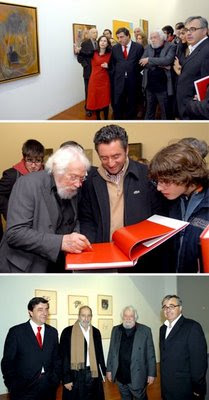




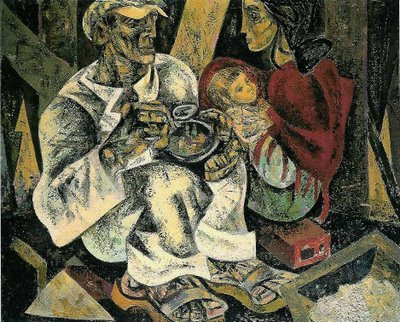


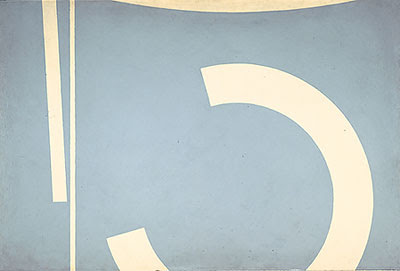
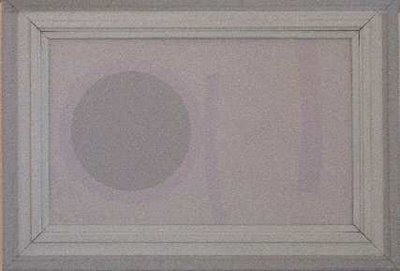

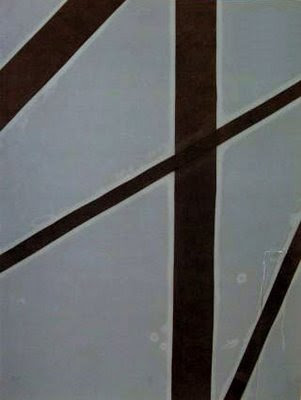
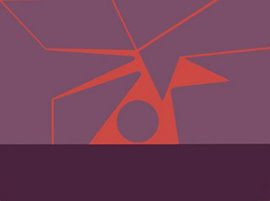

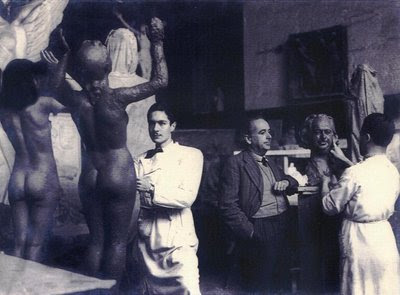



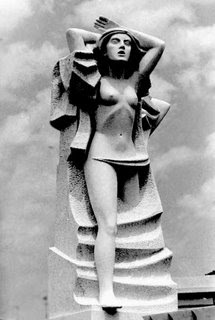

 The logic and syllogism.
The logic and syllogism.